
( UPDATED 2/12/03 )
**IN MEMORY OF DAVID BROWN, A MEMBER OF THE NASA JOHNSON
SPACE CENTER ASTRONOMICAL SOCIETY**
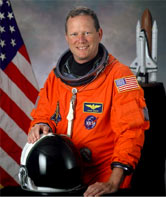
This page is dedicated to increasing public awareness and interest in observing the Space Shuttle and other man-made objects in space.
----------------------------------------------------------------------------------

( UPDATED 2/12/03 )
**IN MEMORY OF DAVID BROWN, A MEMBER OF THE NASA JOHNSON
SPACE CENTER ASTRONOMICAL SOCIETY**

12 February 2003: See the link to Fred Bruenjes account from San Diego just above the ground track graphic.
11 February 2003: Rob Matson reports that he has analyzed the information from three observer reports below and is able to come to the conclusion that the piece of debris seen in photos #4 and #5 by Jay Lawson is exactly the same piece of debris as videotaped by John Sanford in photos #8, #9, and #10. See also the ground track depicting approximate observer locations relative to STS-107's reentry path.
NEVADA OBSERVATIONS:
Photos have been received from Jay Lawson who observed the reentry from Sparks, Nevada. He is located north of the ground track so the shuttle moves right to left in the images. He used a Sony TRV-37 camcorder in "nightshot" mode. Jay's video was manually held and followed the orbiter for about 70 seconds; there is no precise time reference but based on the knowledge of observer locations and where it passes Venus, Rob Matson is able to conclude that the piece is released at about 13:54:34. As STS-107 passes close to Venus in the following shots a flash is seen followed by a small piece of debris which is shed behind it (see arrow in final frame). Jay extracted the frames which are shown in both negatives and positives.
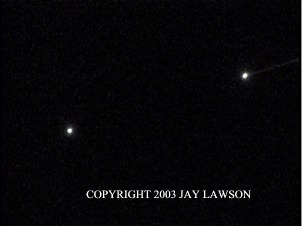
#1 Venus is the left most bright dot. Nothing happens yet.
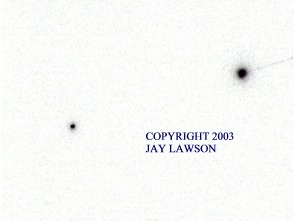
#2 Here the orbiter flares briefly.
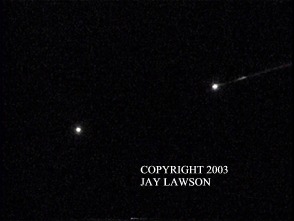
#3 A possible piece of debris appears in the wake of the trail where the flash occurred.
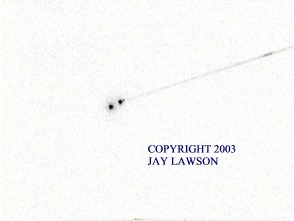
#4 Now as the orbiter moves to the left a separate point like piece of debris is clearly visible.
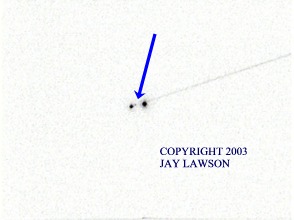
#5 Venus is now the rightmost bright dot and the debris piece remains very close to it as marked by the arrow.
After viewing this video tape, I can also spot what appears to be at least two other brightenings that may correlate with events observed by Baldridge. The brightening is similar to that in photo #3 above where no clear piece is seen as being shed.
CALIFORNIA OBSERVATIONS:
Here are two more sets of photos, the first two are from actual prints while the latter three are stills from video. The two reporting satellite observers, Rick Baldridge, Campbell CA and John Sanford, Springville CA are to be commended for their competency and diligence in recording the reentry and also in submitting the information to NASA. Both are experienced observers and were very diligent in observational methods and reporting.
The following photographs were taken with a 16mm and 28mm lens respectively by amateur astronomer Rick Baldridge observing the reentry of STS-107. It is probably pertinent to pay attention to brightenings in the trail as seen below. Such brightenings are abnormal as compared to previous missions and seem to be supported by the brightening from the Lawson images above. In the trailed time exposures below the observer is south of the ground track so that the shuttle is moving left to right.
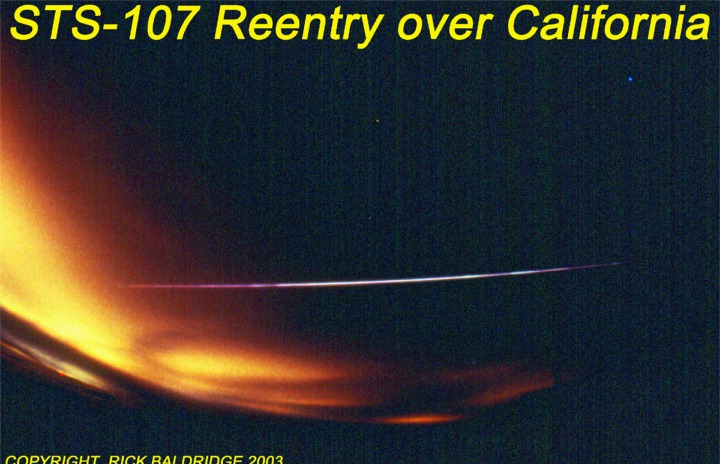
#6 The bright star Vega appears as the bright blue star in the upper right of the frame. The yellow orange clouds to the west and northwest reflect sodium vapor lights from the San Jose area. Red dots under clouds are TV tower lights. The star Beta UMi appears orange above center under the 'y' in 'reentry'. Polaris appears faintly blue below Beta Umi but above the Shuttle path. Brightness variations must be carefully interpreted near start/end of track since clouds were visible at the extremes. ISO 400 Kodak Elitechrome film, f2/8. One minute exposure started at 13:53:25UT on February 1, 2003.
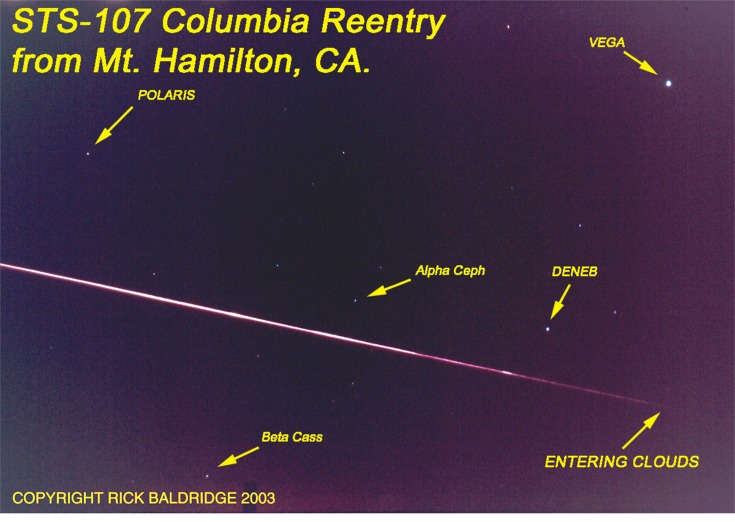
#7 ISO 400 Kodak Elitechrome, f/3.5. One minute exposure started 13:53:25UT.
Rick also made a video tape which appears to record 4 pieces breaking off at 13:53:46UT, 13:53:48, 13:53:57 and 13:54:03UT.
The following are stills by John Sanford who shot Digital Hi-8, 20x tracked video from lower California. The bright object is the orbiter, while the fainter small object is a piece being shed around 13:54:34.7 which is clearly later than Baldridge's pieces. The small speckles in the photos are noise from the video.

#8 A piece of debris is seen to appear behind the orbiter.
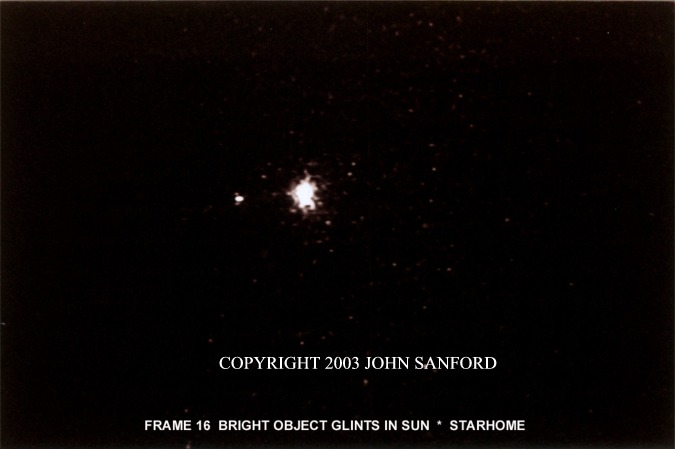
#9 The piece continues to fall behind.
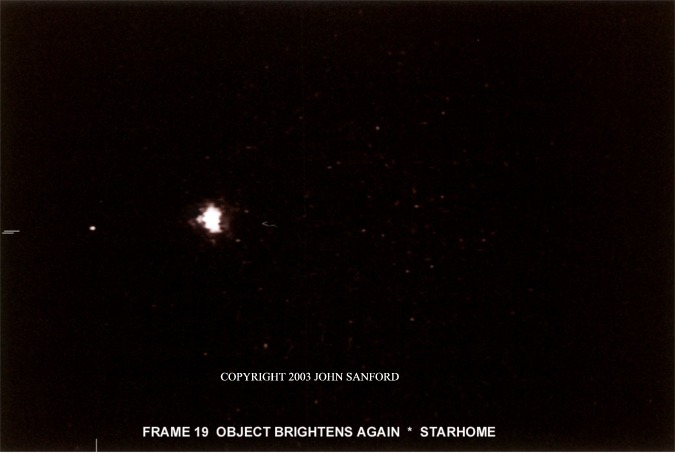
#10 A final view of the same piece.
Here is a brief account of John's experience:
"I got up about 1330UT ...after hearing... that they were predicting a dawn reentry pass over California. Never having seen a Shuttle reentry much less with this favorable geometry, I decided to try it. I set the Sony DigHi8 on manual focus and a tripod and took the IR blocker out, sacrificing color for some sensitivity. The camcorder was in "Nightshot" mode. Sure enough, about 1354UT, the fireball appeared in my NNW coming up over what we call the Blue Ridge. I aquired it at normal zoom and zoomed in to about 15-20x, the limit of my optical zoom. The object went through some tree limbs and as soon as it was in the clear, something happened. There was a very brief flash, and some material came out into the slipstream. Within one second, a bright pointlike object seprated from the fireball and fell back, observable for maybe a second or so. It appeared to flutter as if it were a flat panel of some sort. The main fireball continued across the northern sky, reaching perhaps 15d altitude before going through the top of another tree and down behind Moses Mountain to my ENE. I noted the trail was incandescent and lasted several seconds, long enough for me to zoom back, switch to NS2 for more sensitivity, and reframe. It was slightly foggy and I noted the fireball was perhaps brighter than I expected, maybe -2 to -3 magnitude. I went back into the house and watched with growing horror the NASA control room (on NASA TV) as they realized the s/c was not going to reach Florida. Then in about 15 minutes the terrible footage from WFAA in Dallas showed the multiple fireballs in the early morning sunlight, and I knew it was all over. Then I looked at my footage and realized there were events of import on it. I was taping at 13:54:34UT, which I believe was when they actually lost contact with the data and comm channels."
An additional observation was reported from Ramona, CA.
See
SAN DIEGO PHOTO AND REPORT. This report from Fred Bruenjes shows the flash followed by a piece being shed at 13:54:37 with an accuracy of +/-2 seconds. It is very likely that this piece is the same as that observed by Sanford and Lawson. What is remarkable is that the elevation of the pass is around 5 degrees above the horizon.Rob Matson has constructed a more up to date projection of the trajectory of STS-107. The resulting graphic follows showing the approximate positions of the three video observers. Note the dashed lines leading to the angular orientation of Sanford and Lawson when they apparently observed the same event. The times are local PST.
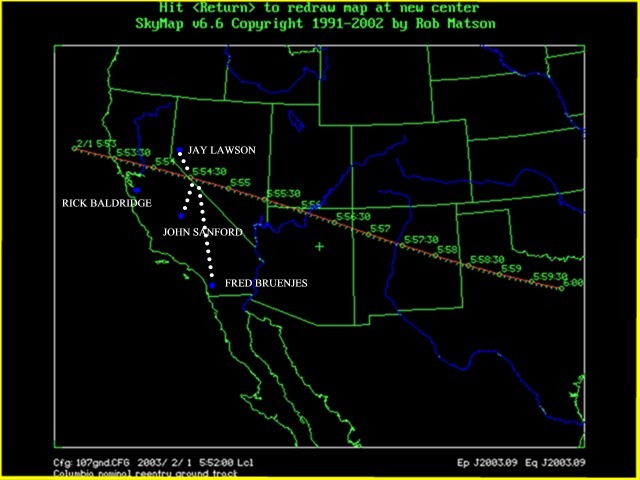
Other observations were apparently made from Arizona and Owens Valley, CA of pieces coming off between 13:54:13 to 13:54:57 UT but I have received no other information. However, this evening (February 4) video from a TV station in Phoenix, AZ was shown on ABC network in which one large fragment is clearly seen falling backward in the shuttle wake. The video was shot near Flagstaff, AZ.
Photos obtained from various internet sources follow:
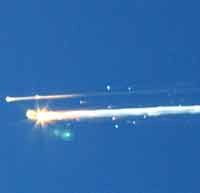
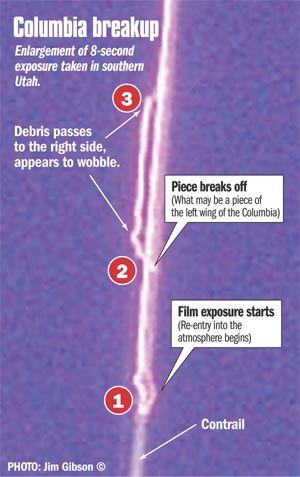
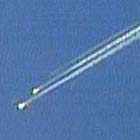
***DEBRIS IMAGES FROM EAST TEXAS***
Hundreds of pieces of debris have been located, many in bizarre and hard to reach spots and others right out in the open. Here is a sample of a few of these located within or around the town of Nacogdoches; origin of photos is from various places on the internet.
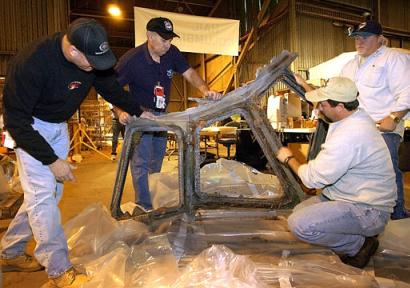 possible remains of cockpit window frame
possible remains of cockpit window frame
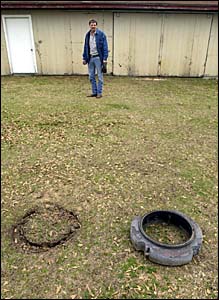 Larry Epps stands exactly where we was when the debris piece in
front of him hit the ground
Larry Epps stands exactly where we was when the debris piece in
front of him hit the ground
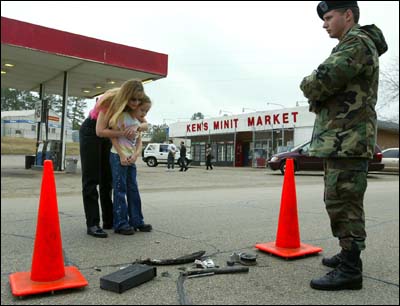 tourists examine a guarded piece which landed at a gas station
tourists examine a guarded piece which landed at a gas station
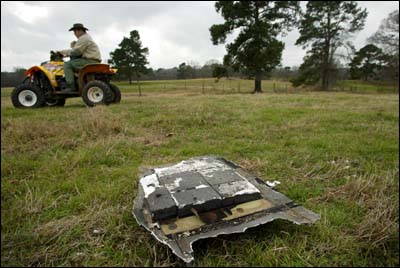 pieces fell on ranchland
pieces fell on ranchland
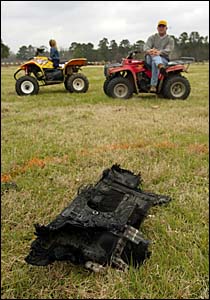 a
very charred piece of debris
a
very charred piece of debris
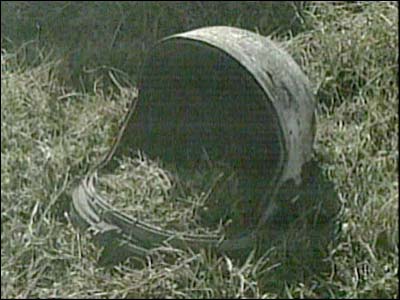 an astronaut's helmet
an astronaut's helmet
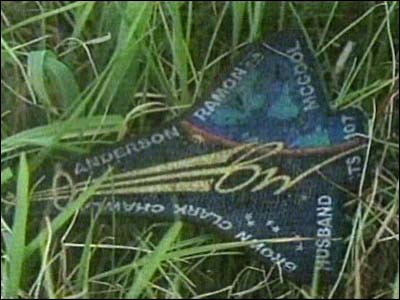 An
STS-107 patch found where it lay
An
STS-107 patch found where it lay
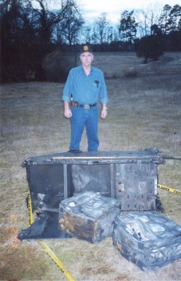 Cargo compartment piece
Cargo compartment piece
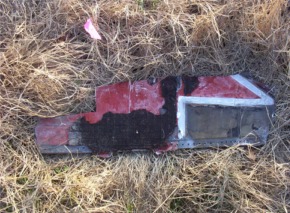
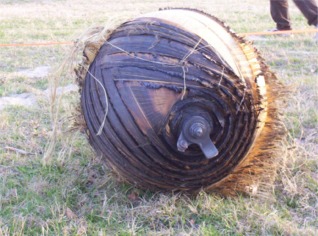 fuel cell
fuel cell
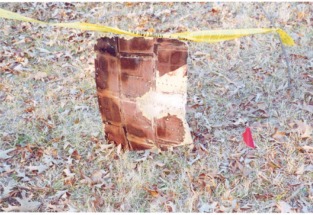
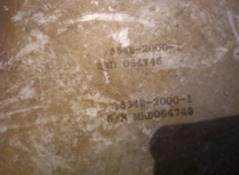 writing on tank
writing on tank
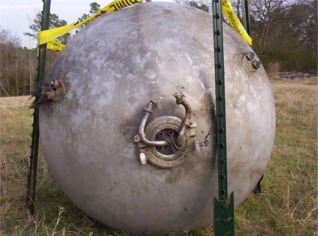 tank
tank
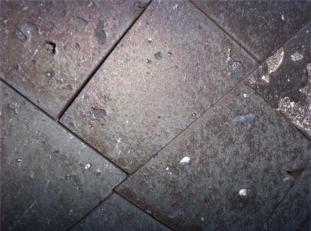 tile
closeup
tile
closeup
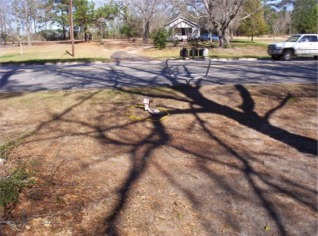 typical small piece found near a street
typical small piece found near a street
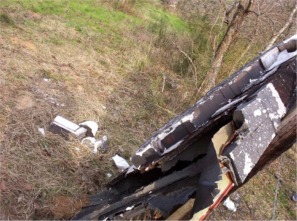 wing
piece
wing
piece
another wing piece view
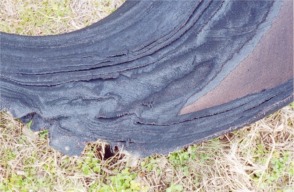 tire
tire
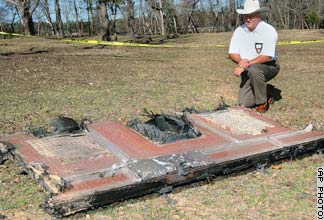 large
debris found in Rusk, TX
large
debris found in Rusk, TX
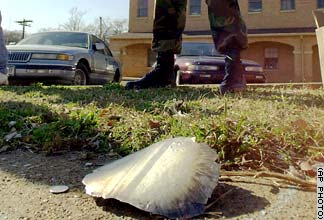 a
curved metal piece near a quarter
a
curved metal piece near a quarter
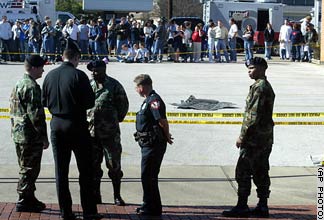 piece
found in a parking lot
piece
found in a parking lot
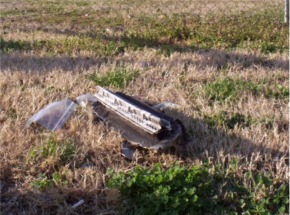 debris found in a yard
debris found in a yard
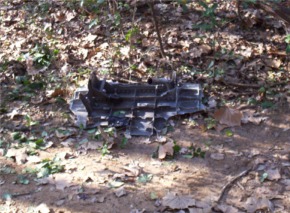 debris found in leaves
debris found in leaves
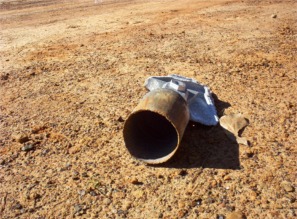 strut long view
strut long view
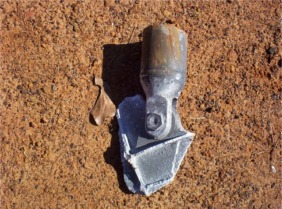 strut top view
strut top view
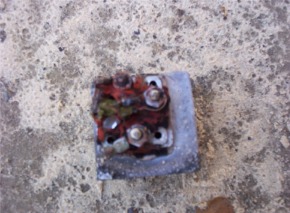 junction box
junction box
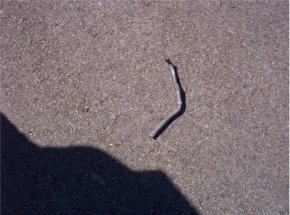 tubular debris
tubular debris
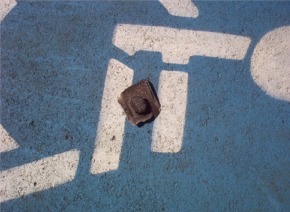 a
tiny piece in a handicapped parking spot
a
tiny piece in a handicapped parking spot
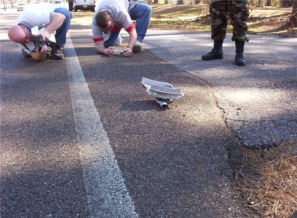 a
small piece found where it lies
a
small piece found where it lies
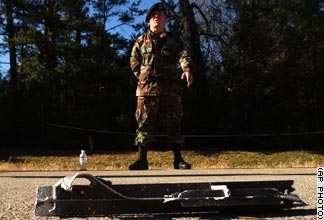 2
meter long piece in the street
2
meter long piece in the street
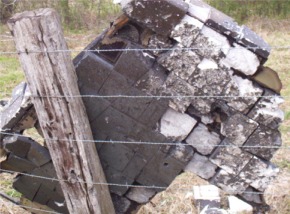 wing piece
wing piece
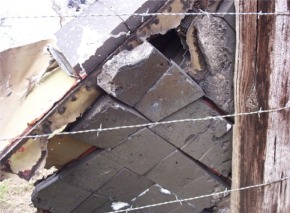 wing tiles leaning against a fence
wing tiles leaning against a fence
****************************************************************************************************
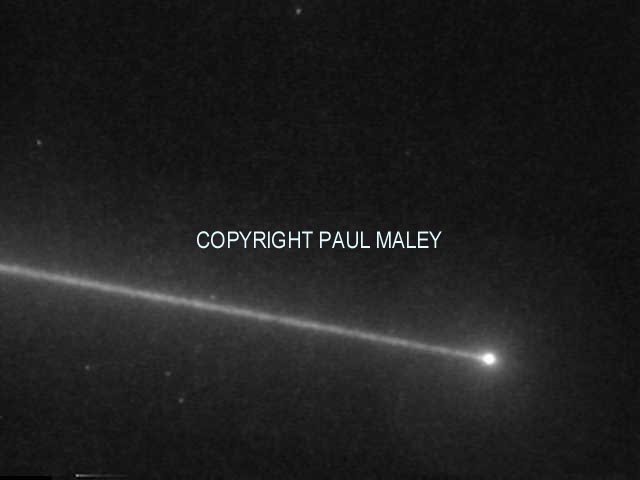
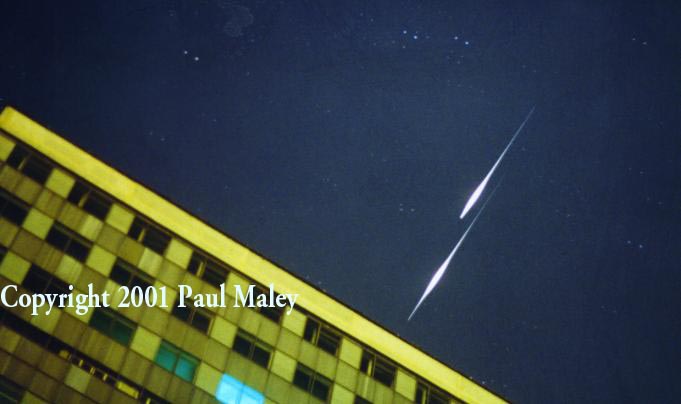
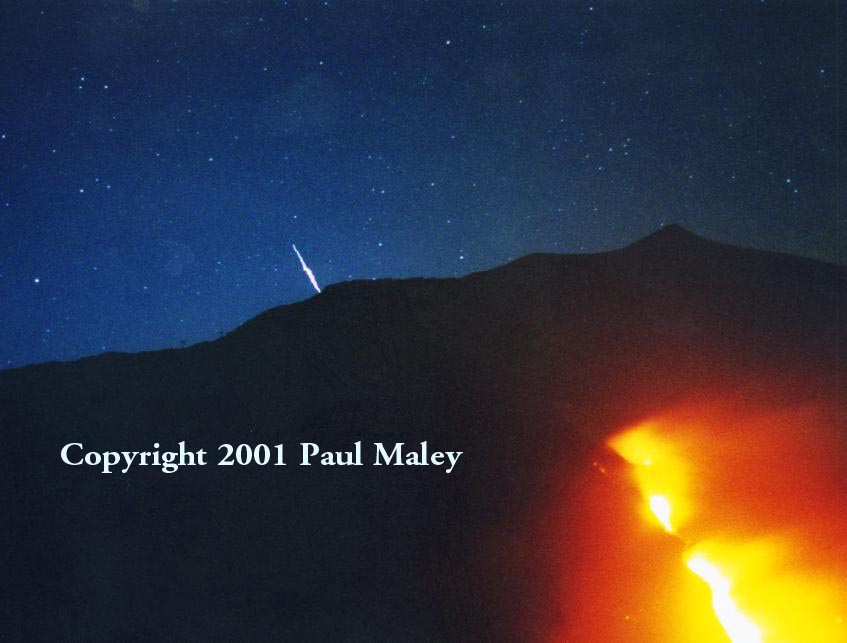
Satellite observing has long been an important avocation for me
since my first earth satellite observation in 1960 from San Antonio, Texas. I
also maintain many other astronomical pursuits that include occultations, eclipses, comets, and meteor
showers. However, my interests in satellite observation have varied from
tracking specific objects for fun, to tracking for research purposes. Not only
do I follow them from home, but also when I am traveling on business and during
vacation. I compile magnitude records on some satellites in an effort to keep
'an eye' on selected targets in space to see what they are doing now and how
they have been behaving in the past. Perhaps one reason why I enjoy it is that
so few others seem to focus on this field of observation.
It is quite a challenge to track small man-made objects down to even less
than one meter in diameter that appear at different times. Over the years I have
collected a number of examples of images of my own coverage of fleeting
aerospace events that effectively show what you are missing if you are not a
satellite watching enthusiast. As a complement to optical and visual tracking, I
use conventional and low light level video techniques, as well as still cameras
as necessary. The observation of artificial earth satellites can prove to be
meaningful, educational, enriching and rewarding not only to adults but also to
children.
Up until the mid 1990's, the number of satellite trackers had been limited to
a small cadre of really serious observers or analysts. The advent of freeware
and Internet sites such as that developed by the Belgian Working Group
Satellites has focused information on techniques of observation and provided
instructional aids and sources of data on orbital elements. More importantly, a
remarkable user friendly web site called Heavens-Above (see link below)
developed by Chris Peat has enabled the avocation of satellite watching to
become available to Internet users around the world.
I would like to acknowledge the excellent software (QUICKSAT and HIFLY),
developed by Mike McCants of Austin, Texas that has enabled most of the
observations I have been able to make over the last 30 years. Appreciation is
expressed to Ed Cannon and Jeff Hunt who made valuable suggestions regarding the
format of this web site. I would like to apologize for not having configured the
photos as thumbnails. In some parts of the site, I reference 5-digit numbers to
identify the specific satellite. This is the catalog number from the
US Space Command catalog.
Enjoy the web pages!
IMAGES OF EARTH SATELLITES
MEASURING OPTICAL CHARACTERISTICS
USEFUL LINKS
WebCounter